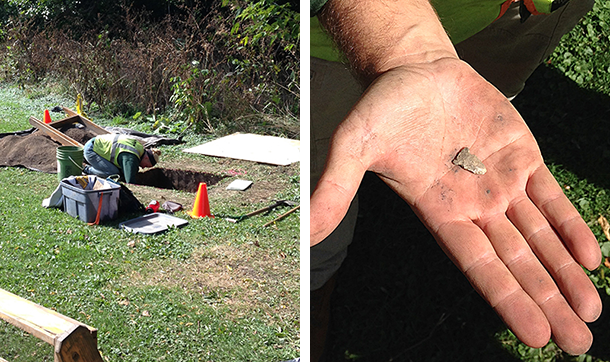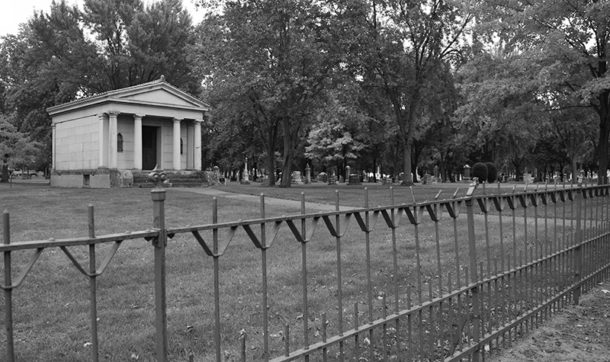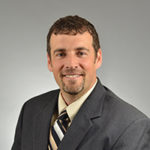Transportation Designers Avoid Cemeteries – and Not Just on Halloween
Our transportation engineers avoid cemeteries at all costs – not because they’re spooky (especially on Halloween) but because having a road run into a burial site causes all sorts of headaches for clients, contractors, and the design team.
A current intersection reconstruction project on CTH CE and Railroad Street in the Village of Kimberly, Wisconsin, has Holy Name Cemetery in the northeast quadrant of the intersection. Headstones are shown within the existing right-of-way plats. Our design team is coordinating with our archaeological subconsultant to complete an Archaeological Field Survey Report form and Archaeological Literature and Records Review form to coordinate with the Wisconsin Department of Natural Resources.
Coordination Makes for Successful Project
We also will be coordinating with the Wisconsin Department of Transportation (WisDOT), completing documentation that shows the legal boundaries of the cemetery on our project plan. A required WisDOT checklist includes providing a sketch of the cemetery showing the relationship of the cemetery boundary to the right-of-way, including distance to the marked boundary of the cemetery and distance to the edge of the first row of graves.
The design team also will work with the cemetery sexton on the cemetery’s history and what’s been platted out in it. Records research is the first basic step.
WisDOT’s Facilities Development Manual has a section on “Burial Sites and Burial Related Discoveries.” It provides guidance on documenting whether the boundary of a cemetery or other burial site extends into a project’s “area of potential effects” (APE) and the process to be followed if the burial site is indeed within the APE.
Depending on the type of burial site, it could take up to three months for a decision to be made on whether work can take place within the boundaries of the site. If a burial site is found during construction, all construction in the area must stop, and the area must be fenced off and protected until appropriate treatment measures are determined. Whether the unexpected burial site is encountered during design or construction, it’s the kind of surprise that can wreak havoc on a project schedule.
Avoiding Archaeological Sites Too
Cemeteries aren’t the only archaeological sites we have to watch out for. For a project on West 6th Street in the City of Racine, Wisconsin, we’ve been working to locate an archaeological Native American campsite that appears to be partially within the project APE. Our subconsultant has been digging into the site in various locations (mechanically and by hand) and has uncovered a number of artifacts. The archaeological data recovery plan also has a detailed section on what to do if human remains were discovered. The first action: All work in the area of the discovery stops, and the area is protected until WisDOT, the Wisconsin Historical Society, and other involved agencies can decide on the next steps.
 In general we try to avoid cemeteries as much as possible. When reconstructing a road that passes by a cemetery, the specifications will require that contractors use fencing to make sure they don’t inadvertently stockpile supplies on top of graves. We’ll also design curb and gutter along the cemetery, even if it’s on a rural road. This avoids accidentally digging into an area where there could be graves when constructing the typical shoulder and ditch of a rural road. Using curb and gutter allows us to fill in any existing ditch without doing any excavation within the limits of the cemetery.
In general we try to avoid cemeteries as much as possible. When reconstructing a road that passes by a cemetery, the specifications will require that contractors use fencing to make sure they don’t inadvertently stockpile supplies on top of graves. We’ll also design curb and gutter along the cemetery, even if it’s on a rural road. This avoids accidentally digging into an area where there could be graves when constructing the typical shoulder and ditch of a rural road. Using curb and gutter allows us to fill in any existing ditch without doing any excavation within the limits of the cemetery.
Want to know more about cemeteries and city planning? Check out the Cemeteries in the City Plan report from the American Planning Association.
Troy Robillard, PE, is manager of transportation services in Ayres Associates’ Green Bay and Waukesha offices. His responsibilities include state and county highway design, urban street design, environmental documentation, and public involvement.


 By
By
Post a comment: